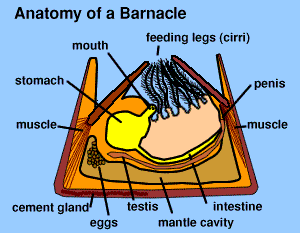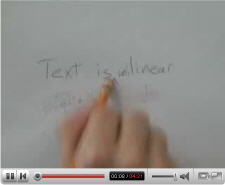Let’s say you’re a practice manager for a veterinary clinic or animal hospital, and you realize you need to change your current marketing budget. Like last year and the year before, your marketing spend heaps way too much money on print and other tactics that are missing many of today’s consumers.
So what do want to learn most desperately when a skinny, still-slightly-contageous (cough, cough) marketing geek climbs behind the podium at your conference (organized by the AAHA)? Well, I’ll tell you.
What follows are links to resources that should come in handy if you live in the world of a practice manager, and will come in particularly handy if you attended my presentations. These are a Greatest Hits of sorts, based on the questions posed at the end of each of four presentations, and in emails I’ve received as recently as last night, requesting specific answers to question.
First, here are the topics we covered, linked to their mind maps — which served as outline during the presentations:
- Boost the Marketing Power of Your Website (PDF – 135k)
- Wise Use of Search Engine Marketing to Grow Your Business (PDF – 130k)
- Social Network Marketing & Web 2.0: Why It’s Important & How to Harness It! (PDF -Â 121k)
- Mobile Marketing: What Is It, How Can It Be Used & Where Is It Going? (PDF -119k)
Most Popular Questions Posed
I took a while to post this because I wanted it to be comprehensive, and until even last night, I was getting requests for specific information. The profession of veterinary medicine is clearly waking up to the ways a strong online presence can help grow a practce and keep it vital!
Q: If you say a site that is “content managed” is ideal, what is the best person in my organization to manage that web content?
A: The simple answer is it’s the person closest to the authoritative content. Content management systems have opened businesses up to a greater intimacy with their customers by making web sites more useful. If you know that a business’s site will provide you with realiable, time-sensitive information, you’ll return to the site more often. And ostensibly, you’ll be more ready to refer the site — and the business — to others. What sort of information can an animal hospital site provide? You do not have to talk about animal diseases or treatments. Other general sites do that. Talk about how your services may be accessed (hours? phone numbers?), the way your services are provided and what I can expect if I go to you. Know your audience, and provide every scrap of information that could be useful.
This will require someone close enough to the answers, but obviously not a veterinarian whose hours would better serve the business by being devoted to billable work. Is there an assistant or clerical person who feels good about writing short snippets of information? Expose this person to all the facts needed and then let that person go!
Q: Regarding search engine marketing: What if I have a new site that is competing against large, established practices for the same keyworks. These older sites are “owning” the keywords. My site barely shows up in search engine results pages for them. Help!
A: You’ve done the first step. You realize there is a problem. One should consider a site’s real home page to be a search engine results page! The first step is to do a compehensive inventory of all keyword phrases you want to go after. The odds are, your competitor won’t be present for all phrases for all major search engines. You can start by creating content that is optimized for those unclaimed phrases. As for the others, realize that search engines favor age over “youth” when they look at web sites, so your new site will be viewed skeptically by Google, et al. So the second step is to find more backlinks than your competing sites have. Truly high-quaity backlinks can confer credibility fast. Here’s a post to help you establish backlinks.
Q: Can you help me read up on social network marketing?
A: It’s the hottest top around in online marketing, and that was clear from the volume of questions I received immediately after my presentations, and subsequently, via email. Luckily there is a ton of material out there. Start with my post on why Facebook is a good set of “training wheels” for those unsure about how to begin. This post specifically addresses why Facebook is superior in its ability to instruct a user than Twitter. For an overall map of the social network space, I posted one nine months ago that gives you a taste of its size and complexity. The most valuable aspect of the map is the categories. You don’t have to follow many. Just think of the types of social sites that might have users talk about you.
Yelp was discussed a great deal in my AAHA talk. Here is a link to that outstanding On The Media podcast, where Bob Garfield (of AdAge fame) explores what you can do when someone dishes dirt about your business on Yelp and elsewhere (the short answer: Precious little! But it helps to know when dirt has been dished). This link to OnTheMedia.org includes an embedded sound player, a way to download the MP3, and even a link to the transcript, if you’d prefer to read instead of listen. It’s a great show overall — I cannot recommend it more highly for understanding how media of all types are influencing us … and are themselves influenced, by politics, business and society.
Q: I like the idea of a new media refrigerator magnet to promote my practice. Tell me more about Digital Pet Parade.
A: That’s the Facebook widget that can also be viewed in higher-end smart phones, and can even be embedded in the blogs of your biggest fans (by one fairly recent count there are over 70 million blogs out there — certainly some of those are written by people your practice delighted). Read my post and then contact me if you’d like to be part of the beta test for this exciting marketing tool.
Did I miss any?
Let me know in the comments section below what other questions you’d like answered!
 As I pointed out in my post, this application is part of a larger trend. Namely, that of launching a shoestring site that is financially independent of a larger site, but completely dependent on it for survival. It’s an interesting paradox, and all but cries out for a new piece of jargon. You know, something to toss out casually during your next new media PowerPoint presentation.
As I pointed out in my post, this application is part of a larger trend. Namely, that of launching a shoestring site that is financially independent of a larger site, but completely dependent on it for survival. It’s an interesting paradox, and all but cries out for a new piece of jargon. You know, something to toss out casually during your next new media PowerPoint presentation.